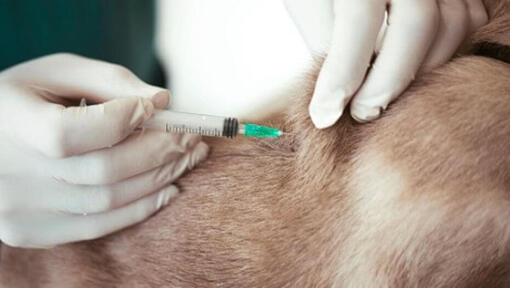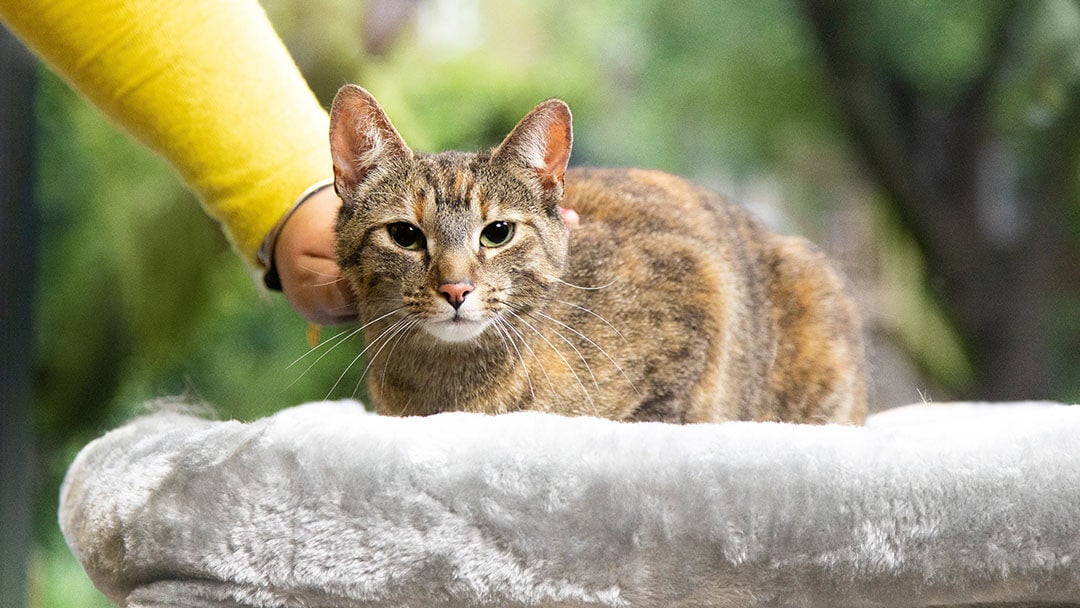
It’s a sad reality that our furry friends are prone to getting some of the same diseases as us, and that includes cancer. Cancer in cats is less common than it is in dogs, but when they develop it it’s more likely to be fatal. Learn what to be on the lookout for and how to catch it early with our guide.
Cancer in cats is an unfortunate reality that can affect our feline friends. While it’s less common than it is for dogs to get cancer, when cats develop the mutation it’s more likely to be serious as they’re masters of hiding their discomfort, therefore it’s often caught later.
If you suspect your cat has cancer, it can be a truly scary time and you may fear that you might lose your pet. To help you help your pet, we’ve put together this guide to tell you everything you need to know about cat cancer symptoms and treatments.
What is a tumour and when is it cancerous?
A tumour is an uncontrolled growth of cells that forms a lump. Sometimes these lumps can disrupt organs and make them not function properly and when this happens, it can be incredibly serious for your pet. There are two types of tumours – benign and malignant. Benign tumours stay where they are first formed, meaning they are not actually cancerous and are generally relatively straightforward to treat, depending on the placement. The other type of tumour is called a malignant tumour, these are cancerous and can be aggressive and invasive as they spread throughout the body. These types can be serious and may be quite difficult to treat.
Types of cancer in cats
It may surprise you to learn that our cats can actually suffer from many of the same cancers as humans. A few of the most common types of cancer in cats are as follows:
- Lymphoma – cancer of a type of white blood cell called the lymphocyte.
- Leukaemia – cancer of the bone marrow.
- Breast cancer – also called ‘mammary gland tumours’ these start as a small lump in your cat’s mammary gland.
- Squamous cell carcinoma – cat skin cancer which will usually appear as a lump or white patch and may look similar to certain cat skin problems.
- Soft tissue sarcoma – this type of cancer can affect the skin, fat, connective tissues, nerves and small blood vessels below the skin.
Cat cancer symptoms
Cancer in cats can be incredibly difficult to detect as they can easily hide their pain. Unless the cancer actually materialises as a physical lump and you can see or feel it, you’ll have to make sure you pay more attention to their behaviour and mood instead. Additionally, a lot of the cat cancer symptoms can be signs of other diseases or illnesses too, but your vet will be able to make a diagnosis.
Some of the cat cancer symptoms you should be on the lookout for are:
- Weight loss – often cats with cancer will have a poor appetite and they may lose a lot of weight.
- Difficulty chewing – if your cat is displaying difficulty chewing, it could be a sign of cat mouth cancer. It’s important to regularly check and clean your cat’s teeth so you can be on the lookout for any possible mouth problems.
- Vomiting and diarrhoea – cancer in cats can affect the digestive system, so these symptoms can be an indicator.
- Lethargy – if your cat is hiding more than usual or spending more time sleeping, it could be a sign that they’re feeling unwell.
- Lumps, bumps and lesions – if your cat has bumps or lumps or sores that won’t seem to heal, it may be a sign of cat skin cancer, this is one of the most obvious symptoms but also one of the least common.
- Difficulty breathing – sometimes cancer in cats can cause fluid or inflammation in or around their lungs which may make it difficult for them to breathe.
If your cat displays any of the above cat cancer symptoms, take them to the vet as soon as possible, as even if it’s not cancer, it still could be a symptom of a health condition that needs treatment.
Diagnosis
Unfortunately, cancer in cats can’t be identified by just looking alone, so your vet will need to do further tests. Blood samples will almost always be taken in order to detect the effects of the cancer and to also make sure that another disease isn’t the cause of your cat’s cancer symptoms.
X-rays and sometimes an ultrasound or MRI will also be taken to identify where and how serious the tumour is. Once it’s been located, a biopsy will usually be done by an experienced pathologist to examine the microscopic tissues and determine if the tumour is cancerous or not.
Treatment
The treatment for cancer in cats will depend on the type your cat has, but your vet will be able to suggest the best way forward for both the type of cancer and your cat. For superficial tumours such as squamous cell carcinoma, soft tissue sarcomas and mammary tumours, surgery may be required and sometimes chemotherapy too. Where chemotherapy may sound scary, it’s nowhere near as extreme as it is for humans. It will usually be administered via injections and if your cat appears to experience discomfort during the treatment, it can be stopped. Additionally, sometimes radiation therapy may be suggested, but it’s much less likely.
The best way to ensure that your cat makes a full recovery is to catch the cancer early. Make sure you take your cat for regular vet check-ups and keep an eye on their behaviour and mood. If they display any cat cancer symptoms, contact your vet straight away.
If you want to find out more about cat health, read our article about hernias in cats.















